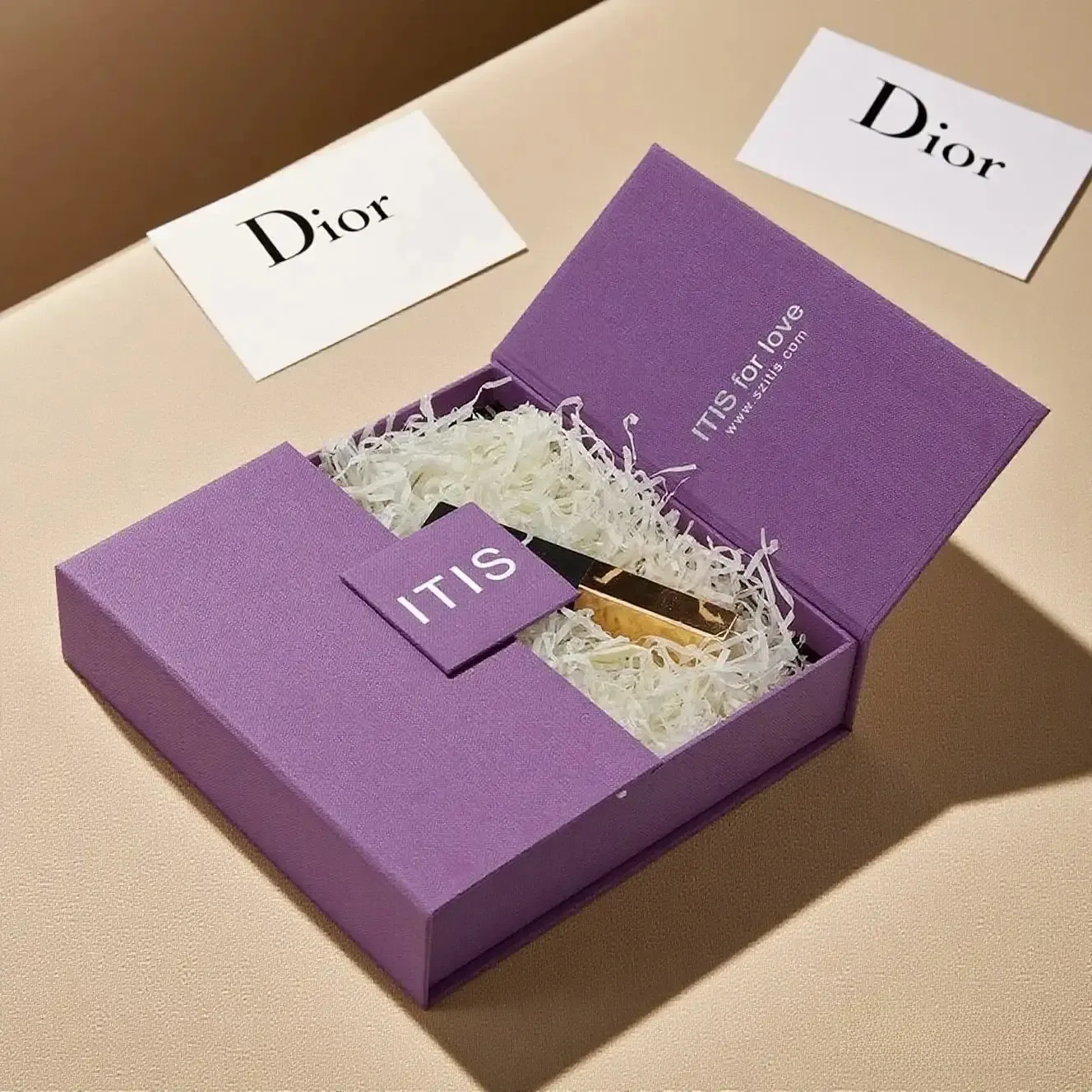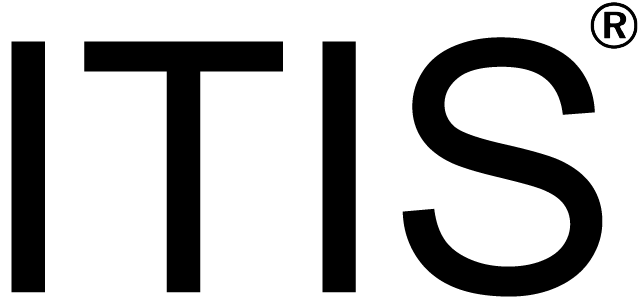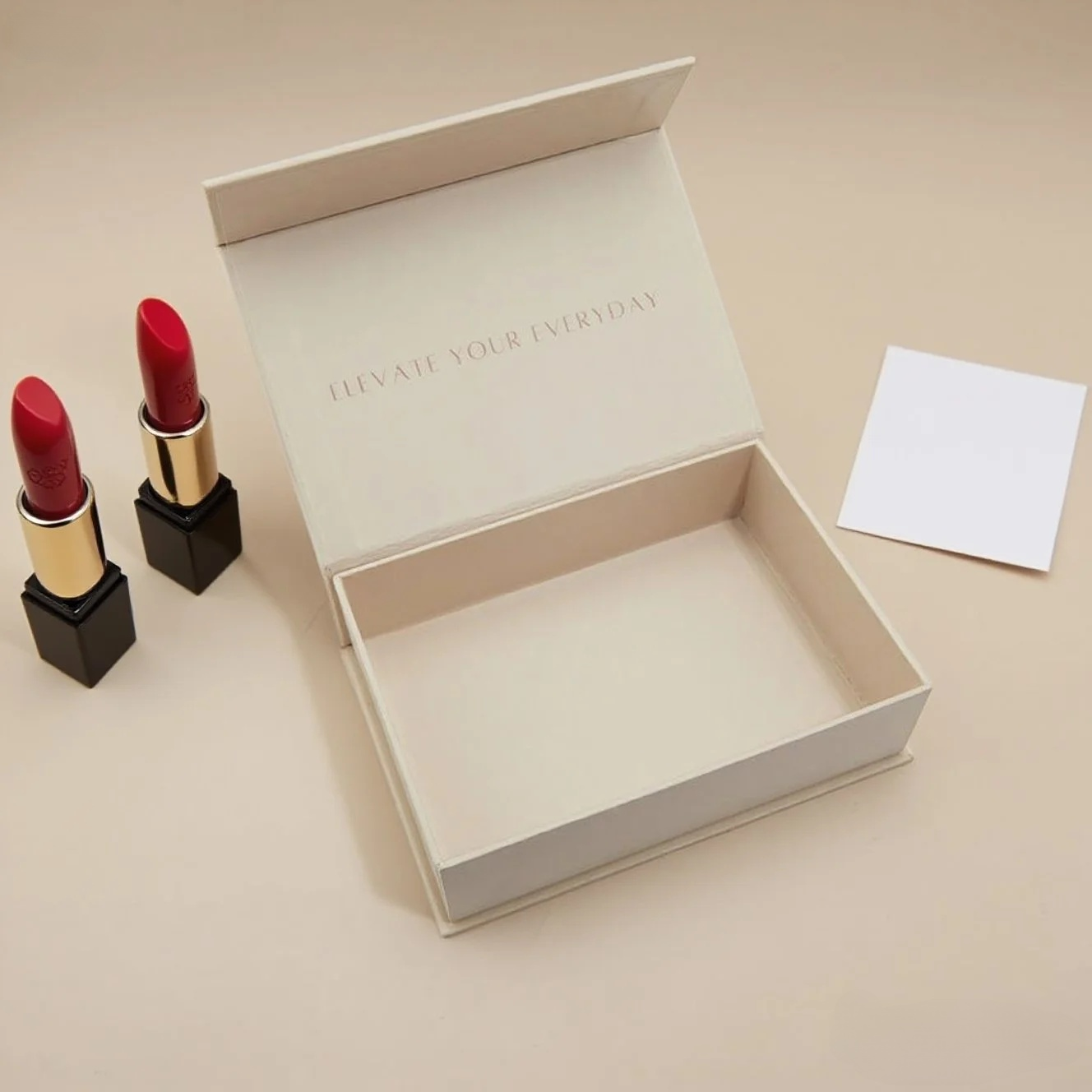The Rising Demand for Eco-Conscious Beauty Solutions
The cosmetic industry is undergoing a profound transformation as sustainable packaging becomes a priority rather than an afterthought. Cosmetic box designs now serve as tangible expressions of brand values, with environmentally responsible materials and production methods taking center stage. This shift toward sustainable cosmetic box solutions reflects growing consumer awareness about packaging waste and its environmental impact. Beauty brands recognize that the cosmetic box often forms a customer's first physical interaction with their products, making sustainable designs powerful tools for brand storytelling. The evolution of cosmetic box materials from traditional plastics to innovative biodegradable and recycled options demonstrates the industry's commitment to reducing its ecological footprint. These sustainable cosmetic box solutions maintain the premium aesthetics and protective qualities expected in beauty packaging while addressing urgent environmental concerns.
Consumer-Driven Market Transformation
Millennial and Gen Z Influence
Younger demographics are reshaping cosmetic box standards by demanding packaging that aligns with their environmental values. These eco-conscious consumers willingly pay premium prices for beauty products housed in sustainable cosmetic box designs, driving widespread industry adoption. Social media platforms amplify the appeal of innovative cosmetic box solutions that combine sustainability with Instagram-worthy aesthetics. Brands targeting these demographics find that sustainable cosmetic box designs generate positive word-of-mouth marketing and social sharing. The preference for minimalist, eco-friendly cosmetic box packaging reflects broader generational shifts toward conscious consumption and waste reduction. Cosmetic companies responding to these preferences gain competitive advantages in customer loyalty and brand perception.
Transparency Expectations
Modern consumers scrutinize cosmetic box materials and production methods with unprecedented attention to detail. Brands adopting sustainable cosmetic box solutions leverage this as an opportunity to educate customers about their environmental commitments. Detailed labeling about cosmetic box composition, recyclability, and carbon footprint helps build trust with environmentally aware shoppers. The most effective sustainable cosmetic box designs communicate their ecological benefits without sacrificing the luxurious feel expected in beauty packaging. This transparency extends to supply chain disclosures, with brands highlighting sustainable sourcing for cosmetic box materials like bamboo, mushroom mycelium, or ocean plastics. The educational aspect of sustainable cosmetic box packaging often becomes part of the product's value proposition.

Environmental Impact Reduction
Waste Stream Diversion
Sustainable cosmetic box designs significantly reduce the beauty industry's contribution to global packaging waste. Innovations like plant-based inks, water-based coatings, and adhesive-free construction make cosmetic box recycling more accessible to consumers. Many brands now design cosmetic box packaging for multiple lifecycles, encouraging reuse through creative repurposing ideas printed directly on packaging. The shift toward mono-material cosmetic box construction improves recyclability by eliminating mixed-material components that complicate processing. These sustainable cosmetic box solutions address the particular challenge of beauty packaging waste, which often contains small components that traditionally escaped recycling streams. Progressive brands are even developing take-back programs where used cosmetic box components can be returned for proper recycling or repurposing.
Carbon Footprint Minimization
Lightweighting strategies in sustainable cosmetic box design reduce transportation emissions throughout the supply chain. Locally sourced materials for cosmetic box production further decrease the carbon footprint associated with long-distance material transport. Many sustainable cosmetic box solutions incorporate post-consumer recycled content, dramatically lowering the energy requirements compared to virgin material production. Some brands now calculate and display the carbon savings of their sustainable cosmetic box options as part of their environmental claims. The most advanced cosmetic box designs consider the entire product lifecycle, from material sourcing through end-of-life disposal, to minimize overall environmental impact. These comprehensive approaches to sustainability are becoming expected rather than exceptional in premium beauty packaging.
Regulatory and Industry Pressures
Emerging Packaging Regulations
Governments worldwide are implementing strict policies that make sustainable cosmetic box solutions a compliance necessity rather than a choice. The European Union's Packaging and Packaging Waste Directive sets ambitious targets that are reshaping cosmetic box design across global markets. Extended Producer Responsibility (EPR) schemes increasingly include cosmetic box packaging, making brands financially accountable for end-of-life management. These regulations drive innovation in sustainable cosmetic box materials that meet both legal requirements and consumer expectations. Forward-thinking brands anticipate rather than react to these regulatory changes, using sustainable cosmetic box design as a proactive strategy. The harmonization of international packaging standards further accelerates adoption of eco-friendly cosmetic box solutions across borders.
Retailer Sustainability Requirements
Major beauty retailers now impose sustainable cosmetic box standards as a condition for shelf space and promotional opportunities. Specialty stores like Credo Beauty have pioneered strict packaging guidelines that challenge brands to rethink cosmetic box materials and design. These retailer requirements create ripple effects through the supply chain as brands demand sustainable solutions from their cosmetic box manufacturers. The growing prevalence of sustainability scorecards in retail buying decisions makes eco-conscious cosmetic box design a competitive necessity. Some retailers even offer preferential terms or marketing support for products featuring innovative sustainable cosmetic box solutions. This top-down pressure complements consumer demand to accelerate industry-wide adoption of environmentally responsible packaging.
Material Innovation and Design
Biodegradable Substrate Development
Breakthroughs in material science are expanding options for sustainable cosmetic box construction beyond traditional paperboard. Mushroom-based packaging, seaweed derivatives, and agricultural waste composites now compete with conventional cosmetic box materials. These innovative substrates maintain the structural integrity required for luxury beauty packaging while offering compostability. The development of moisture-resistant bio-based barriers addresses historical limitations of sustainable cosmetic box materials in humid environments. Some brands are experimenting with seed-embedded cosmetic box designs that transform packaging waste into green spaces. These material innovations allow sustainable cosmetic box solutions to meet the exacting technical requirements of skincare and cosmetic products.
Minimalist Structural Design
Sustainable cosmetic box architecture increasingly eliminates unnecessary layers and components without compromising product protection. Brands are reimagining traditional cosmetic box formats to use fewer materials while maintaining premium presentation. Techniques like origami-inspired folding reduce or eliminate adhesive needs in sustainable cosmetic box construction. The minimalist approach extends to secondary packaging, with many brands developing shipping-ready cosmetic box designs that eliminate outer cartons. These streamlined sustainable cosmetic box solutions demonstrate that environmental responsibility can coexist with sophisticated design aesthetics. The most successful implementations enhance rather than diminish the unboxing experience that luxury beauty consumers expect.
Brand Differentiation and Storytelling
Authentic Sustainability Narratives
Sustainable cosmetic box designs provide tangible evidence supporting brand claims about environmental commitment. The cosmetic box becomes a physical manifesto communicating corporate values through material choices and production methods. Brands leveraging sustainable cosmetic box solutions often incorporate educational elements that explain the packaging's ecological benefits. This storytelling transforms the cosmetic box from passive container to active participant in brand messaging. Luxury brands particularly benefit from sustainable cosmetic box designs that demonstrate how environmental responsibility enhances rather than compromises quality. The authenticity of these sustainable cosmetic box narratives resonates strongly with consumers skeptical of greenwashing in the beauty industry.
Visual Identity Evolution
Sustainable cosmetic box designs are redefining luxury aesthetics in the beauty sector through natural textures and earthy color palettes. The distinctive appearance of recycled materials and plant-based coatings creates visual signatures for eco-conscious brands. Many sustainable cosmetic box solutions feature subtle imperfections that highlight their handmade or artisanal qualities. This organic aesthetic differentiates products on crowded retail shelves while communicating sustainability values at first glance. Brands are discovering that sustainable cosmetic box designs can establish strong visual identities without relying on glossy finishes or metallic accents. The tactile experience of these eco-friendly materials adds another dimension to product differentiation in the beauty market.
FAQ
Are sustainable cosmetic boxes as durable as traditional packaging?
Modern sustainable cosmetic box materials match conventional options in protection and shelf life while offering environmental benefits.
How much more do sustainable cosmetic boxes cost compared to standard options?
While premiums exist, economies of scale and material innovations have narrowed the price gap to 15-30% for most sustainable cosmetic box solutions.
Can sustainable cosmetic boxes maintain a luxury feel?
Advanced materials and finishes now allow sustainable cosmetic box designs to deliver premium aesthetics comparable to traditional luxury packaging.
What sustainable materials work best for cosmetic boxes?
FSC-certified paperboard, bamboo composites, and PCR plastics currently offer the best balance of sustainability and performance for cosmetic applications.



